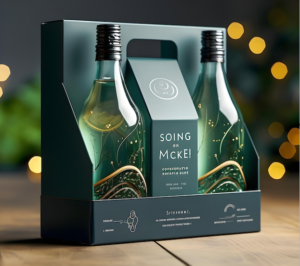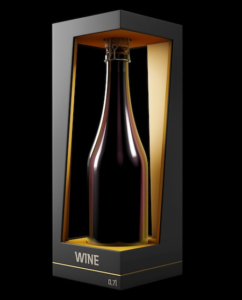As a wine enthusiast, a winery owner, or a wine retailer, you know how crucial it is to preserve the quality and integrity of your wines during transportation. Whether you’re sending bottles to customers or participating in wine events, ensuring your precious cargo arrives intact and undamaged is essential. This comprehensive guide will delve into the world of cardboard wine shipping boxes, exploring their features, benefits, and how they play a crucial role in safeguarding your wines during transit.
The Importance of Cardboard Wine Shipping Boxes
Cardboard wine shipping boxes are purpose-built containers crafted from corrugated cardboard. These boxes are specifically designed to house and transport wine bottles securely. They come in various styles and designs to cater to different bottle sizes and quantities.
Key Features and Benefits
- Cushioning: The interior of these shipping boxes is lined with inserts that provide cushioning and support to prevent bottles from colliding with each other or the box walls during transportation.
- Insulation: The sturdy cardboard construction of the boxes also offers insulation, helping to maintain the wine bottle’s temperature and protecting them from extreme weather conditions.
- Stacking Capabilities: Cardboard wine shipping boxes are stackable, allowing for efficient use of space during storage and transportation.

The Importance of Inserts in Wine Packaging
The inserts used in cardboard wine shipping boxes play a crucial role in ensuring the bottles remain secure during transit. They prevent the bottles from moving around inside the box, reducing the risk of breakage. Common types of inserts include molded pulp, foam, and dividers. Each type provides a level of protection suitable for various bottle shapes and sizes.
Advantages of Using Cardboard Wine Shipping Boxes
-
Protection during Transportation
- One of the primary advantages of using cardboard wine shipping boxes is the protection they offer during transportation. The combination of sturdy cardboard and inserts ensures that the wine bottles are kept safe from external impacts and shocks that can occur during shipping.
-
Convenient Handling and Storage
- Cardboard wine shipping boxes are designed with convenience in mind. They are easy to handle, allowing for efficient packing and unpacking. Additionally, the stackable design makes storage hassle-free, maximizing the use of available space.
-
Branding and Customization
- These shipping boxes present an excellent opportunity for branding and customization. Businesses can add their logos, artwork, and other branding elements to enhance their brand presence during the delivery process. Customization options allow for a personal touch when sending wine as gifts.
-
Eco-Friendly Packaging Solution
- Choosing cardboard wine shipping boxes reflects a commitment to eco-conscious practices. Made from recyclable materials, these boxes help reduce the environmental impact of packaging waste. They are an ideal choice for businesses and individuals who prioritize sustainability.

Best Practices for Packaging Wine Bottles
-
Properly Inserting Bottles
- When packing wine bottles, follow a step-by-step guide to ensure the inserts hold the bottles securely in place. Proper insertion minimizes the risk of bottles shifting during transit.
-
Sealing and Labeling
- Securely seal the cardboard wine shipping boxes using high-quality packaging tape to prevent leakage. Label the boxes appropriately to ensure proper handling and delivery.
Branding and Customization Of Shipping Boxes For Wine:
These shipping boxes present an excellent opportunity for branding and customization. Businesses can add their logos, artwork, and other branding elements to enhance their brand presence during the delivery process. Customization options allow for a personal touch when sending wine as gifts. Whether it’s a special message for the recipient or a unique design that reflects your brand identity, personalized packaging adds an extra layer of thoughtfulness to every delivery.

Conclusion
Cardboard Wine Shipping Boxes with Inserts offer a reliable and efficient solution for safeguarding your precious wine bottles during transit. With their cushioning, insulation, and stackable design, these boxes ensure that your wine bottles arrive at their destination intact and ready to be enjoyed. At BlueRose Packaging, we prioritize your packaging needs with top-quality solutions. From Cardboard Wine Shipping Boxes with Inserts to eco-conscious practices, we ensure secure and sustainable transportation. Visit our website, https://www.bluerosepackaging.com/ to explore our comprehensive range of packaging supplies and discover how we can assist in safeguarding your valuable products.
FAQs:
Q. What types of inserts are commonly used in these boxes?
A. Common types of inserts used in cardboard wine shipping boxes include molded pulp, foam, and dividers. Each type offers varying levels of protection, suitable for different bottle shapes and sizes.
Q. Can I customize the Cardboard Wine Shipping Boxes for branding purposes?
A. Yes, we at BlueRose packaging provide customized cardboard boxes for wine shipping with logos, artwork, and other branding elements. Customization options allow businesses to enhance their brand presence during the delivery process.
Q. Can I reuse or recycle Cardboard Wine Shipping Boxes?
A. Yes, cardboard wine shipping boxes can be reused for storage or shipped again. They are also recyclable, making them an environmentally responsible choice.
Q. Are Cardboard Wine Shipping Boxes suitable for international shipments?
A. Yes, these boxes are suitable for both domestic and international shipments. However, it is important to communicate the fragile nature of the cargo to ensure proper handling during transportation.

